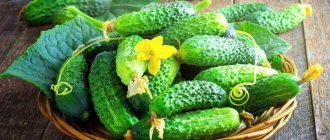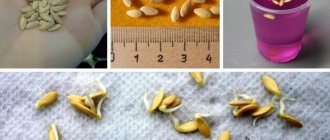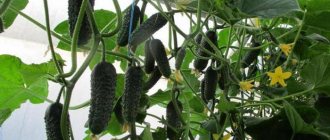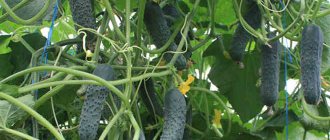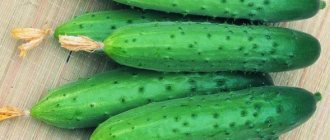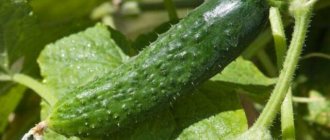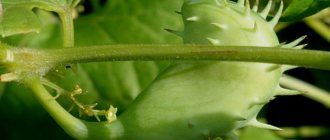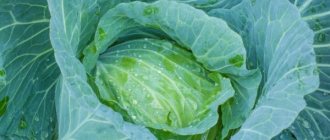Alex f1 is presented as a promising early parthenocarpic hybrid. Has earned recognition from gardeners and farmers around the world. Due to its marketability and excellent taste, it is used for salads, summer pickling, and winter canning.
| Landing location | Ripening time | Mode of application | Fruit length | Group | Fruit smoothness | Pollination method |
| Universal | Early ripening (35-45 days) | Universal | Medium - from 10 to 15 cm | Hybrid | Slightly lumpy | Parthenocarpic |
Description of the hybrid
Cucumber Alex f1 is a product of selection by the Dutch company Bejo Zaden . The culture was included in the State Register of Russia in 2007. The hybrid is approved for cultivation in all regions of the country, in open and closed ground.
The culture is characterized by early ripening and long fruiting , until mid-October. The bushes are indeterminate, medium-sized, medium-climbing, with female-type flowers. 4–6 ovaries are formed in the nodes. The fruits ripen together and look like Adam f1 cucumbers from Bejo Zaden.
The photo shows hybrid cucumbers.
Alex's Distinctive Features:
| Indicators | Characteristic |
| Ripening period | 38–42 days |
| Pollination type | Parthenocarpic |
| Weight | 70–90 g |
| Length | 9–11 cm |
| Form | Cylindrical |
| Coloring | Green or dark green with short stripes and slight spotting |
| Leaves | Small green and dark green |
| Pulp | Crispy juicy |
| Taste | Sweetish without bitterness |
| Skin | Dense, finely tuberculate, with dense white pubescence |
| Purpose | Universal |
| Productivity | 2.8–5.7 kg/m², for the first 10 days of collection - 1.6 kg/m² |
| Sustainability | To cucumber mosaic virus, powdery mildew and olive spot |
| Transportability | High |
Composition, calorie content and benefits
Nutritional value of cucumbers (per 100 g):
- calorie content - 14 kcal;
- proteins - 0.8 g;
- fats - 0.1 g;
- carbohydrates - 2.5 g;
- water - 95 g;
- fiber - 1 g.
Table of vitamin and mineral composition:
| Name | Content | Norm |
| Vitamin A | 10 mcg | 900 mcg |
| Beta carotene | 0.06 mg | 5 mg |
| Vitamin B1 | 0.03 mg | 1.5 mg |
| Vitamin B2 | 0.04 mg | 1.8 mg |
| Vitamin B4 | 6 mg | 500 mg |
| Vitamin B5 | 0.27 mg | 5 mg |
| Vitamin B6 | 0.04 mg | 2 mg |
| Vitamin B9 | 4 mcg | 400 mcg |
| Vitamin C | 10 mg | 90 mg |
| Vitamin E | 0.1 mg | 15 mg |
| Vitamin H | 0.9 mcg | 50 mcg |
| Vitamin K | 16.4 mcg | 120 mcg |
| Vitamin PP | 0.3 mg | 20 mg |
| Potassium | 141 mg | 2500 mg |
| Calcium | 23 mg | 1000 mg |
| Silicon | 53 mg | 30 mg |
| Magnesium | 14 mg | 400 mg |
| Sodium | 8 mg | 1300 mg |
| Sulfur | 6.5 mg | 1000 mg |
| Phosphorus | 42 mg | 800 mg |
| Chlorine | 25 mg | 2300 mg |
| Iron | 0.6 mg | 18 mg |
| Iodine | 3 mcg | 150 mcg |
| Cobalt | 1 mcg | 10 mcg |
| Manganese | 0.18 mg | 2 mg |
| Copper | 100 mcg | 1000 mcg |
| Molybdenum | 1 mcg | 70 mcg |
| Selenium | 0.3 mcg | 55 mcg |
| Fluorine | 17 mcg | 4000 mcg |
| Chromium | 6 mcg | 50 mcg |
| Zinc | 0.215 mg | 12 mg |
Benefits for the body:
- restoration of water balance;
- acceleration of metabolism;
- cleansing blood vessels;
- normalization of pressure;
- reducing the level of “bad” cholesterol;
- whitening and moisturizing the skin;
- regulation of the pancreas.
Cucumber Alex F1. AgroElita
Cultivation care
Caring for the hybrid cucumber "Alex f1" is based on regular watering with warm water in the morning or evening, as well as fertilizing with mineral and organic fertilizers. The bushes are regularly irrigated with warm water that has been standing for 2-3 hours. Optimum water temperature + 18 C +25 C.
May be interesting Rules for feeding cucumbers with manure: which manure is better, how to apply Late blight of cucumbers: the best ways to treat the plantCucumbers of the "Salinas f1" variety: advantages of a bunch hybrid
Watering is carried out at the root at the rate of 1.5-2 liters per bush. If water gets on flowers and leaves, pathogenic microflora develops. Moisturizing is carried out once every 4 days. If the air temperature rises, water the cucumbers once every 2 days. If it has rained and the soil is moistened to a depth of 10-15 cm, watering is suspended. Such a taste quality as crunchiness depends on a stable periodic level of soil moisture. Manure is used as fertilizer. For 1 m² you will need 1 bucket of manure fertilizer.
Pinching is not necessary as long as the bush receives enough light and is at a comfortable temperature. The manipulation is carried out to increase fruiting and improve the taste of the fruit. In order to do pinching, you need to: tie the bush to a support or trellis. When the main stem reaches a height of 0.5 m, the lower side shoots, ovaries and inflorescences are removed. Thus, a blinding zone of the bush is formed. Above it, pinch the lashes that appear on the sides above the first leaf. Upon reaching 1.5 m, one ovary and several leaves are left. Then, at a height of two meters, 3-4 ovaries and the same number of leaves are left on each shoot. If the bush is actively growing in height, it is thrown over a support or trellis, and it grows downwards. The growing point is removed when 20 cm remains to the ground. One healthy leaf must be left on each ovary.
Attention!
Harvesting should be done in a timely manner, avoiding fruit overgrowth. As a rule, cucumbers are removed once every two days. Irregular harvesting contributes to lower yields and worsens the quality of the fruit.
Agricultural technology
The crop is grown primarily through direct sowing into the ground . Some farmers still use seedlings and then plant them in a permanent place. The agricultural technology of the crop is standard. To obtain a consistently high yield and minimize infection of plantings by fungi and bacteria, frequent loosening, weeding, moderate watering and fertilizing with organic matter and minerals are carried out.
Direct sowing
Cucumbers love fertile loamy and breathable soil .
By observing crop rotation and saturating the soil with nitrogen, phosphorus, potassium and humates, high productivity can be achieved. It is much easier to maintain soil fertility in outdoor areas than in a greenhouse. In protected soil, crops are swapped : the soil is quickly depleted, pathogenic flora accumulates in it, which cannot always be destroyed when treated with pesticides.
Changing the top layer of soil and replacing it with a new one corrects the situation, but this method is labor-intensive and expensive. Oats, white mustard, oilseed radish and legumes quickly restore soil fertility in a greenhouse Green manure increases the level of nitrogen, potassium and phosphorus, inhibits the development of fungi and bacteria. In closed ground, plants are sown in autumn. Within a month they quickly gain green mass. They are mowed and embedded in the ground. Microbiological preparations “Vostok-EM” or “Baikal-EM” accelerate decay.
In the garden, sowing of green manure (clover, lupine, oats, beans, peas) begins in March–April. Plants make the soil loose and fertile. They often mulch beds.
The early ripening of the Alex f1 hybrid allows plants to be sown in the ground . This is done in May–June, depending on the region of growth. The minimum ground temperature is +16 °C, air temperature is +20 °C.
Important! The seeds are pre-processed in production, so they do not require additional manipulations.
The soil on the site is loosened and fertilized with chicken droppings (10 l/m²). The beds are formed with a bayonet shovel and leveled with a rake. The sowing depth corresponds to half a spade bayonet . The recesses are poured with a hot dark solution of potassium permanganate and sprinkled with wood ash. Seeds are planted at a distance of 20–25 cm and sprinkled with wet peat.
The beds are covered with agrofibre to protect against frost and maintain optimal humidity. After the emergence of seedlings, the shelter is removed and the seedlings are thinned out. Weak sprouts are pinched at ground level, strong ones are left.
Growing seedlings
Cucumber seedlings begin to be grown 3–4 weeks before the intended planting in a permanent location.
The soil mixture is prepared from 2 parts humus and pus, 1 part river sand or sawdust. The components are mixed in a large bucket and filled with Fitosporin-M solution or potassium permanganate. Peat containers with a volume of 500 ml are filled with a damp substrate, 2 seeds are planted to a depth of 1-2 cm. A film is pulled over the top, and the containers are placed in a warm place.
After the sprouts appear, the film is removed and the seedlings are placed on a lighted windowsill. If necessary, seedlings are illuminated with fluorescent lamps.
The crop is inspected as it grows : weak shoots are pinched (cut with scissors), but not pulled out so as not to damage the root system. Water with plenty of clean water at room temperature. Frequency: 1 time per week.
The seedlings are planted in a permanent place at the stage of 4 true leaves, after the soil has been warmed to at least +16 °C and the air to +20 °C. Planting pattern: 20x60 cm, 4-5 bushes per 1 m². The roots are earthed up, the soil is lightly compacted and watered abundantly.
Care
Rules for caring for crops:
- Maintaining the air temperature in the greenhouse at +22...+25 °C, humidity - 80–85%.
- Watering plants with warm water at the roots in the morning and evening or organizing drip irrigation.
- Mulching the soil with hay, straw, sawdust.
- Regular loosening and weeding of beds.
- Shaping the bushes, according to the rules for parthenocarpics, and tying them to the trellis.
- Fertilizing with organic matter and minerals 4-5 times per season. Particular attention is paid to the fruiting period.
- Timely harvesting to maintain productivity.
Hybrid feeding scheme:
| Stage of development | Fertilizer |
| Before flowering | Dissolve 100 g of pressed yeast in 10 liters of water and leave in a warm place. After 3 days, stir and pour over the cucumbers. Consumption – 500 ml per 1 bush. |
| During the flowering period | 15 g of ammonium nitrate, 30 g of superphosphate, 15 g of potassium sulfate per 10 liters of water. Consumption - 10 l per 1 m². |
| 5 tsp. boric acid, potassium permanganate on the tip of a knife per 5 liters of water. Spray the bushes in the evening. | |
| During the fruiting period | Infusion of nettle or tomato tops (1:15). Water at the root. Consumption - 5 l/m². |
| 50 g of urea per 10 liters of water. Treat bushes in the evening. | |
| 200 g of wood ash per 10 liters of water. Consumption - 10 l/m². |
Reference! Cucumbers are fed with root fertilizers in dry, sunny weather, and with foliar fertilizers in cloudy weather.
Features of cultivation and possible difficulties
To support plant productivity, they are shaped by regulating the growth of leaves and vines . Parthenocarpics are prone to rapid growth of green mass: if you do not pinch the vines, the yield will be lower, all their energy will be spent on the formation of foliage and shoots, not fruits.
Forming rules:
- blind (remove shoots and flowers) in the axils of the first 5 leaves;
- leave 6 side shoots 20–25 cm long;
- pinch several shoots above, leaving 35–40 cm;
- secure the main stem to the trellis by pinching the top, or wrap it around the crossbar several times.
Diseases and pests
Hybrid Alex is resistant to cucumber mosaic virus, powdery mildew and olive spot, and tolerant to downy mildew (peronospora).
Downy mildew (downy mildew) of cucumbers
Signs of the disease:
- brownish-yellow small spots on the leaves;
- gray-violet coating on the back side;
- yellowing of green mass, general wilting of the plant.
Due to the early ripening period of the crop, the fight against the fungus is complicated. Fungicides should not be used during this period. Prevention is a reliable way to preserve the harvest. To do this, the following measures are taken :
- soil disinfection with copper sulfate (50 g of powder per 10 liters of water) or “Fitosporin”;
- loosening and weeding of beds;
- removal of infected plants;
- compliance with crop rotation;
- spraying plantings with fermented milk products with iodine (10 drops per 1 liter);
- feeding with vitamin complexes: “Energen Extra”, “Novosil”.
Preventive treatment is carried out from the moment flowers appear until the end of the growing season . Fermented milk products (kefir, whey, yogurt) are used once every 10 days so as not to acidify the soil.
Cucumbers are often affected by melon aphids, spider mites, whiteflies and slugs . To combat insects, folk remedies are used:
| Pest | Signs | Treatment |
| Spider mite | Small white dots on the backs of leaves, thin cobwebs on the bushes. | 300 g of horse sorrel per 10 liters of water, leave for 4 hours and treat the bushes. Spray the plantings once every 10 days. |
| Aphid | Drooping leaves, drops of honeydew, a large concentration of ants. | Grind 1 kg of aloe vera and add 10 liters of water, add 50 g of laundry soap shavings. Spray the plantings once a week. |
| Whitefly | Sticky coating on stems and leaves, many white larvae in the early stage, white moths in the late stage. | 30 g pepper, 200 g tobacco shag per 10 liters of water. After a day, strain and add 25 g of liquid soap, 120 g of ash. Consumption per 1 m² - 3 liters of infusion. |
| Slugs | Shiny mucus on the leaves, holes in the cucumbers. | A solution of ammonia (4 tablespoons per 10 liters of water) for spraying bushes. Manual collection of pests at night. |
Diseases and pests
When growing Alex cucumbers, it is imperative to implement timely prevention of subsequent diseases and pests:
- melon aphid
- sprout fly
- whitefly
- root-knot nematodes
- spider mites
- tobacco thrips
Of the pathogenic microflora, the pathogens of powdery mildew, peronospora, fusarium, white rot and blackleg pose a particular threat.
Tobacco thrips
Harvesting and application
The fruits are harvested approximately 40 days after full germination . Cucumbers are removed every 2 days. The fruits do not overgrow or barrel, but their regular collection supports further fruiting.
Like all parthenocarpics, Alex hybrid cucumbers are not bitter and have dense, crisp flesh without voids. Ideal for fresh consumption and canning.
Once assembled, they can be stored for about 3 weeks in a cool place , do not turn yellow, and can withstand transportation well.
Advantages of the variety
The hybrid is characterized by early, friendly ripening of fruits. According to reviews and descriptions, the Alex cucumber produces large yields - from one square meter you can harvest up to 6 kilograms of delicious greens.
High yield is not the only advantage of the variety.
- On a plant, one node can form up to six ovaries.
- The greens are dense without bitterness, with a pronounced cucumber aroma and excellent taste.
- Product marketability is 95%.
- It is grown in greenhouses, in open ground, under temporary shelters.
Reviews
Hybrid Alex was highly praised by gardeners for the excellent taste of vegetables, ease of care and long-term fruiting .
Ivan, Vyksa : “I’ve been growing the Alex hybrid for a long time.
The result is always pleasing. Maintenance of the crop is minimal. I installed drip irrigation in the greenhouse, combining moisture with liquid mineral fertilizers. I form the bushes into 1 stem. The cucumbers never got sick with anything.” Irina, Balakhna : “Last season, Alex discovered cucumbers. I grow vegetables for myself in a summer cottage greenhouse. I planted it through seedlings: it’s more reliable. I did not process the seeds. I planted them at the end of May and picked the first cucumbers at the end of June. I liked the taste, sweetish and without bitterness. Inside is full of small seeds, the skin is covered with prickly pimples.”
Landing
Planting and care are carried out through seedlings in pots and direct sowing on permanent beds. Alex grows well and adapts quickly.
The hybrid seeds are completely ready for sowing and do not require disinfection or stimulation.
For seedlings use:
- EM containers, trays;
- peat tablets and pots;
- coconut substrate.
Maintain crop rotation. Legumes, cabbage, and tomatoes are good predecessors for cucumbers, so plant the vegetable above them. The soil should be well heated - the temperature should not be lower than 14-15 degrees. There are no more than 3 bushes per 1 m2.
Cucumber Alex F1: characteristics and description of the variety, photo
The cucumber variety Alex F1 belongs to the group of hybrids with early ripening. This variety was created by Dutch breeders from the Bejo Zaden company. The plant is included in the State Register of Russia for vegetable crops intended for cultivation on personal farmsteads and farms in greenhouses and open areas. The hybrid is consumed fresh, made into salads, and canned.
Description of the variety
The characteristics and description of Alexander cucumbers are as follows:
- You can get a full harvest 30-35 days after sowing the seeds in the ground. The plant has a female type of flowering.
- The bushes of this variety of cucumbers stretch up to 1.5 m. They have many branches with bunched ovaries. The leaves of the plant are painted in dark tones of green. They are small in size.
- On 1 node of the hybrid, 4 to 6 ovaries appear.
- The fruits have a cylindrical shape. Poorly developed ribs run along their surface. The length of the fruit ranges from 100 to 130 mm with a diameter of 3-3.5 cm. The weight of the fruit varies from 70 to 90 g.
Reviews from farmers involved in breeding the hybrid show that the yield of cucumber products when growing the plant in an open area is up to 3 kg per m² of bed. If a gardener grows the Alex F1 cucumber variety in a greenhouse, the yield increases to 5.5 kg per 1 m² of cultivated soil.
In Russia, the described plant is grown in open areas in the southern part of the country. When cultivating vegetables in the middle zone, it is recommended to use film greenhouses; in the northern regions of the country - heated greenhouses and hotbeds.
Landing
Some gardeners prefer to grow vegetables by directly planting seeds in beds. The seeds are buried 20 mm into fertilized soil, watered and waited for germination. There is no need to treat planting material with disinfectants, since the company producing the seeds carries out such treatment.
Sowing is done when the soil is well warmed to the depth of half a spade bayonet. When it gets cold, it is recommended to cover the seedlings with warm material. When sowing a hybrid in open areas, there is no need to form bushes. If the seeds are sown in a greenhouse, then to keep the plants in shape they are tied to trellises.
When cultivating by seedling method, the seeds are first germinated on cotton fabric. After the planting material has thrown out its roots, it is transplanted into boxes with soil fertilized with nitrogen or organic mixtures. The seeds are buried 15-20 mm and watered once every 5 days with warm water. After the sprouts appear, they are fed with complex fertilizers.
The seedlings are transferred to permanent soil at the moment when the seedlings reach a height of 10-15 cm. Before this, the beds are disinfected with potassium permanganate. They loosen and add organic fertilizers to the soil. To protect the seedlings from possible night cold, it is recommended to cover them with film. For every 1 m² of sown area, it is recommended to plant no more than 3 plants.
Caring for Growing Cucumbers
In order for the described plant to produce good yields, you need to pinch its lower side shoots above the 2nd and 3rd leaves.
Top dressing
Cucumbers are fed every 7 days. To do this, first use organic and nitrogen fertilizers, which allow the bushes to quickly gain green mass. When the first flowers appear, the hybrid is fed with complex mineral fertilizers containing potassium, nitrogen and phosphorus in the required proportions.
Watering
Watering the bushes is done early in the morning or late in the evening. The procedure is carried out with warm water. It is recommended to water cucumbers once every 2-3 days with a moderate amount of liquid. If the weather is rainy, then the frequency of irrigation is reduced, and in case of heat or drought, it is recommended to water the plants every day. It is necessary to ensure that a lot of water does not accumulate under the bushes, otherwise the roots of the plants will rot.
Loosening the soil to ventilate the root system of the hybrid is carried out immediately after watering. At the same time, parasites that like to settle on the roots of cucumbers die.
Weeding
Weeding beds to remove weeds helps prevent the spread of fungal and bacterial infections. It is carried out once a week. The procedure allows you to get rid of insects that parasitize weeds and then spoil crop plants.
Treatment
To prevent cucumbers from getting sick, it is recommended to spray young bushes with medications or copper sulfate. If symptoms of any disease appear on the leaves of the hybrid, then the diseased bushes must be dug up along with the roots, taken outside the site, and then destroyed. Such measures will help stop the infection.
When aphids or mites appear on plant leaves, the insects are destroyed using toxic chemicals. If it is not possible to purchase them, then a soap solution or copper sulfate is used to destroy pests.
Video
Reviews about the variety Alex F1
We grow Alex F1 on the windowsill. The bush is not too spreading and does not take up much space. All care consists of daily watering with warm, settled water and fertilizing. We fertilize with those that have the inscription that they are universal. We plant them in special soil, which we buy in supermarkets.
They bear fruit for a long time. Cucumbers grow strong, dense, juicy and very tasty. We use it in the form of salads and all sorts of snacks, sometimes I make vegetable sandwiches. We tried pickling them, they preserved perfectly, they remained just as dense and crispy. Just right for pickles.
Description of the Alex cucumber variety, its characteristics and cultivation
Among the wide variety of hybrids of Dutch selection, there is one interesting specimen - cucumber Alex f1. In 2007, it was included in the state register of plants of the Russian Federation for cultivation in closed and open ground in all regions of the Russian Federation.
Characteristics of the variety
An early-ripening parthenocarpic hybrid that does not require pollination by bees. Flowering type: female. It takes 40 days from the first shoots to harvest. Plants are indeterminate, medium-sized and wiry. From 1 to 3 cucumbers are formed in the leaf axils.
Description of the fruit: finely lumpy green in color; when gherkins are harvested, they reach a size of 70–90 grams, with a size of 9–11 centimeters. Short yellow stripes and dense pubescence are visible on the surface.
Zelentsy are dense, there are no voids when cut. The seeds are small, the taste is sweet cucumber without bitterness. The yield is about 5 kilograms per 1 square meter of cucumber planting with proper care.
The variety is intended for universal use. Suitable for fresh consumption and pickling. They are not resistant to overgrowth. When harvested, 94% of the fruit retains its presentation.
Positive qualities of cucumber Alex
When growing the variety in their garden plots, gardeners noted the following positive qualities of the bush and fruits:
- early ripeness;
- high yield;
- excellent taste;
- resistance to many diseases;
- good commercial quality;
- versatility in use.
Such results can be achieved if you grow cucumbers according to the rules for caring for plants.
Sowing seeds
Since the seeds undergo pre-sale preparation and processing, they do not need to be soaked before sowing. Cucumbers of the Alex f1 variety are grown by planting seeds in beds and germinating seedlings.
In the first case, you need to make sure that there is no frost after sowing the seeds. If you need to get the harvest earlier, then the seeds are planted at home as seedlings, and then, when good weather arrives, they are transplanted to a permanent place of growth. With this growing method, the crop ripens two weeks earlier than expected.
Before sowing seeds, the soil must be disinfected once by watering the bed with boiling water with the addition of potassium permanganate, and then covered with film for a week. Only after these manipulations can you be sure of the safety of the plants.
Growing cucumbers
Alex is grown in the same way as other varieties; no special measures are required. Characteristics of caring for cucumber plants:
- watering;
- weeding;
- fertilizer;
- timely harvesting of fruits.
Watering is carried out at the root; late blight can be caused in a greenhouse if you pour water on the leaves of the plant. In beds when grown horizontally, watering at the root is problematic, so they pour water from a watering can onto the entire bush. Only the procedure should be carried out in the early morning or late evening, at times when the sun is not shining. Otherwise, the plants will get sunburn and die.
Weeding is done as the grass grows; this procedure is also important to perform. If there is a lot of grass on the cucumbers, then all the nutrients will go into the weeds, leaving no food for the cucumbers.
Fertilizing is carried out to saturate the soil, and then the plants, with minerals. Without nutrition, plants will grow poorly and produce a meager harvest. Typically, fertilizing is done three times per season with mineral and organic fertilizers:
- The first time after the seedlings reach two weeks of age.
- The second time is when the cucumbers bloom and form ovaries.
- The third time, when the fruits ripen.
The most popular types of organic fertilizers:
- humus;
- chicken or cow manure;
- compost.
These fertilizers feed the soil for better plant growth. It is important not to overfeed the soil; if the concentration is high, the soil will burn out and nothing will grow on it for several years.
Mineral fertilizers used for fertilizing:
- urea;
- superphosphate;
- ammonium nitrate;
- ammophos;
- potassium salt.
These fertilizers are used to fertilize the soil and pour the diluted mixture onto the bushes using a sprayer.
Thanks to its qualities, the Alex cucumber receives positive reviews from all over Russia. Here's one of them.
Tamara Vladimirovna: “I have been growing the Alex variety since its birth, the taste has not changed. It grows well both in the garden and in the greenhouse. The harvest is always good, the fruits are all the same, beautiful. I advise everyone to try Alex’s cucumber, you won’t regret it.”

